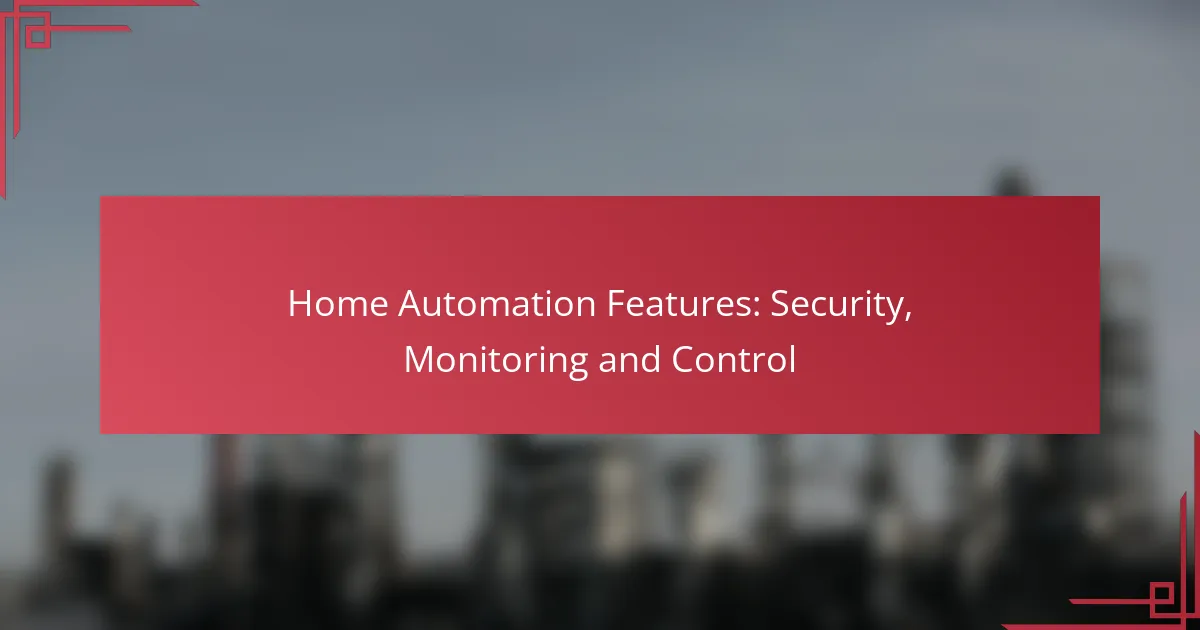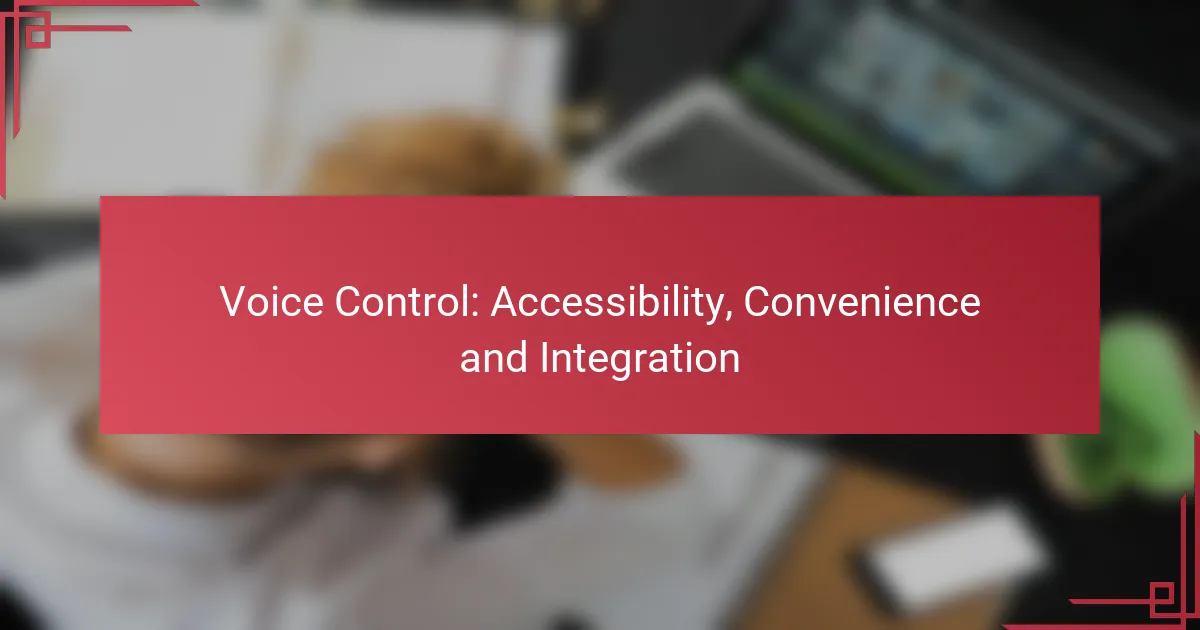Home automation features provide an innovative approach to enhancing security, monitoring, and control within your living space. With smart locks, video doorbells, and security cameras, homeowners can enjoy real-time oversight and management of their properties. This technology not only ensures safety but also offers convenient control options through voice commands and mobile applications, creating a personalized experience for every user.

What are the best home automation security features in Ireland?
The best home automation security features in Ireland include smart locks, video doorbells, security cameras, motion sensors, and alarm systems. These technologies enhance safety and provide homeowners with real-time monitoring and control over their property.
Smart locks
Smart locks offer keyless entry and can be controlled remotely via smartphone apps. They often include features like temporary access codes for guests and activity logs to track who enters and exits your home.
When choosing a smart lock, consider compatibility with your existing door hardware and the level of encryption used to protect your data. Popular brands in Ireland include Yale and August, which provide reliable options for various budgets.
Video doorbells
Video doorbells allow homeowners to see and communicate with visitors from anywhere using their smartphones. They typically feature high-definition video, night vision, and motion detection alerts.
Look for models that offer cloud storage for recorded footage and integration with other smart home devices. Brands like Ring and Nest are widely used in Ireland and provide robust features to enhance security.
Security cameras
Security cameras are essential for monitoring your property and can be installed indoors or outdoors. They can provide live feeds and record footage for later review, helping to deter potential intruders.
Consider cameras with features such as two-way audio, night vision, and weather resistance for outdoor use. Many systems offer cloud storage options, which can be a cost-effective way to keep your footage secure.
Motion sensors
Motion sensors detect movement within a designated area and can trigger alerts or activate other security devices. They are often used in conjunction with cameras and alarms to provide comprehensive coverage.
Choose sensors that can differentiate between pets and intruders to avoid false alarms. Wireless options are available, making installation easier and more flexible for various home layouts.
Alarm systems
Alarm systems provide a critical layer of security by alerting homeowners and authorities to potential breaches. Modern systems can be integrated with other smart home features for enhanced control and monitoring.
When selecting an alarm system, consider whether you prefer a monitored service or a self-monitored option. Look for systems that offer mobile app access and customizable settings to suit your specific needs.
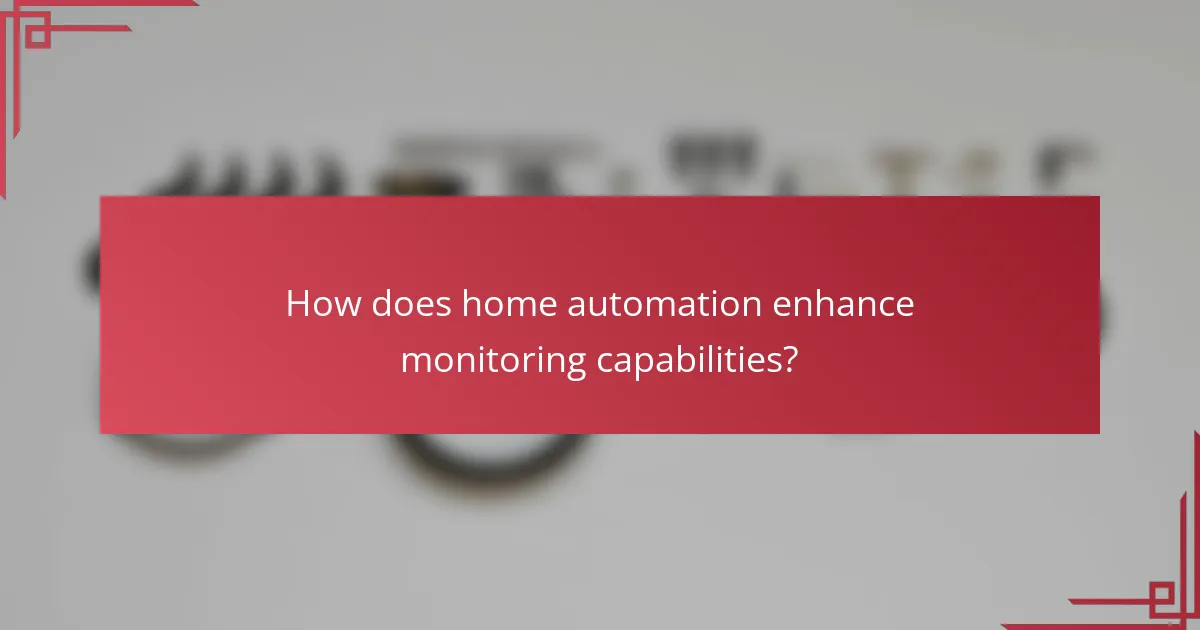
How does home automation enhance monitoring capabilities?
Home automation significantly improves monitoring capabilities by allowing homeowners to oversee their properties remotely and in real-time. This technology integrates various devices, providing a comprehensive view of security and activity within the home.
Remote access via mobile apps
Remote access through mobile apps enables homeowners to monitor their properties from anywhere using smartphones or tablets. Users can view live camera feeds, control smart locks, and adjust security settings with just a few taps.
When selecting a home automation system, ensure the mobile app is user-friendly and compatible with your devices. Look for features such as multi-device support and the ability to manage multiple properties if needed.
Real-time alerts and notifications
Real-time alerts and notifications keep homeowners informed about any unusual activity or security breaches. These alerts can be customized to notify users via push notifications, emails, or text messages, ensuring prompt responses to potential threats.
To make the most of this feature, set up alerts for specific events, such as motion detection or door openings. This way, you can prioritize responses based on the severity of the alert.
Integration with smart home hubs
Integration with smart home hubs allows various devices to communicate and work together seamlessly. This interoperability enhances monitoring by consolidating data from different sources, such as cameras, sensors, and alarms, into a single interface.
When choosing a smart home hub, consider compatibility with your existing devices and the ability to expand your system in the future. Popular hubs often support a wide range of brands and protocols, making them versatile options for home automation.
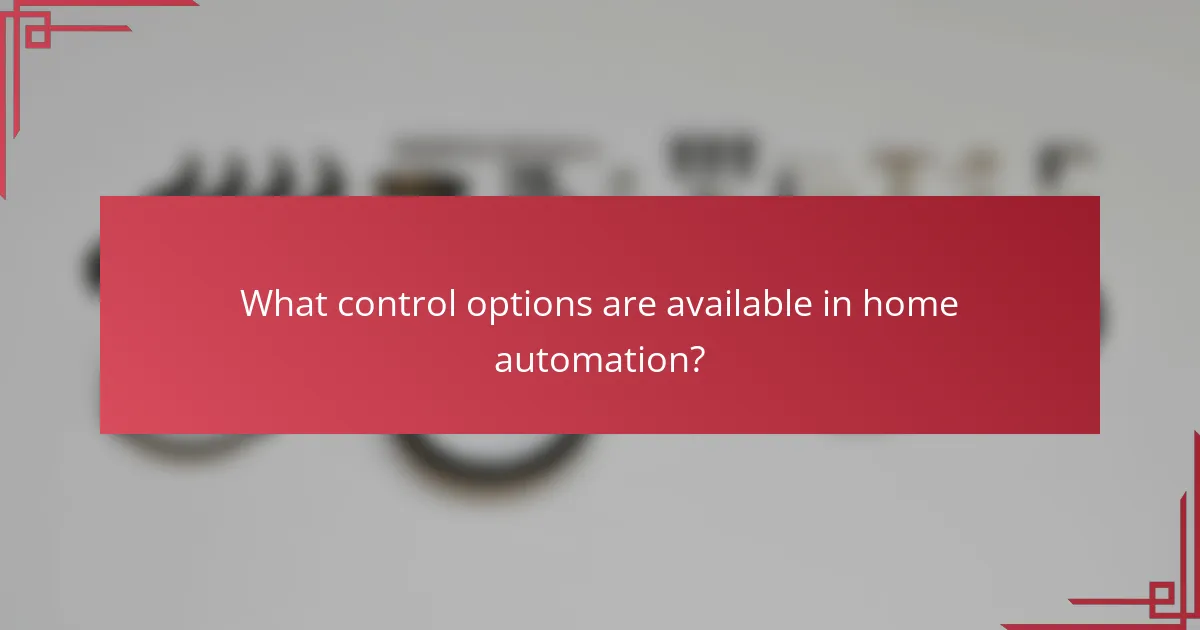
What control options are available in home automation?
Home automation offers various control options that enhance convenience and security. Users can manage their systems through voice commands, mobile applications, and automated schedules, allowing for a tailored experience that fits individual needs.
Voice control with Amazon Alexa
Voice control through Amazon Alexa enables users to operate their home automation systems hands-free. By integrating compatible devices, users can issue commands such as adjusting lighting, locking doors, or controlling thermostats simply by speaking.
To set up voice control, ensure that your smart devices are compatible with Alexa and connected to the same Wi-Fi network. Regularly updating your devices and the Alexa app can enhance functionality and security.
Smartphone app controls
Smartphone applications provide a centralized platform for managing home automation systems from anywhere. Users can monitor security cameras, adjust settings, and receive alerts through these apps, making it easy to stay connected to home systems while away.
When selecting an app, consider its user interface, compatibility with your devices, and security features. Look for apps that offer real-time notifications and remote access to ensure effective monitoring and control.
Automated scheduling
Automated scheduling allows users to set specific times for devices to operate, enhancing energy efficiency and convenience. For example, lights can be programmed to turn on at sunset, or thermostats can adjust based on daily routines.
To implement automated scheduling, access the settings of your smart devices through their respective apps. Create schedules that align with your lifestyle, but be mindful of potential conflicts, such as overlapping device commands that could lead to inefficiencies.
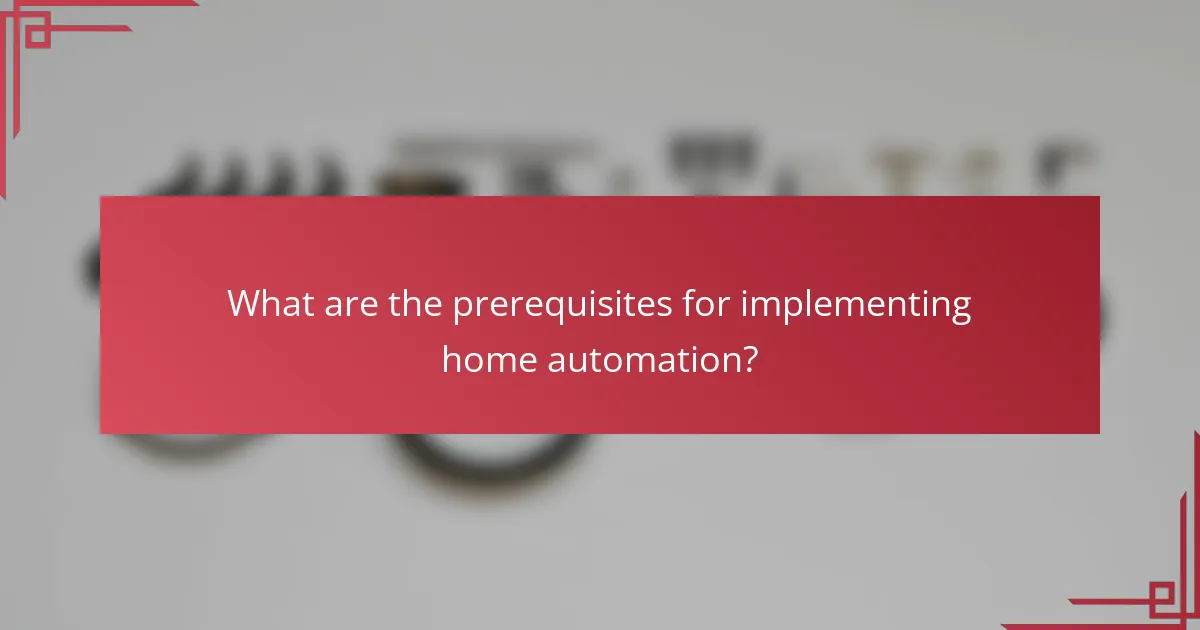
What are the prerequisites for implementing home automation?
To implement home automation effectively, you need a reliable Wi-Fi network and compatible smart devices. These elements ensure seamless communication between devices and allow for efficient control and monitoring.
Reliable Wi-Fi network
A strong and stable Wi-Fi network is essential for home automation. It serves as the backbone for communication between smart devices, enabling them to function correctly and respond promptly to commands.
When setting up your network, consider the coverage area and the number of devices that will connect. A dual-band router can help manage traffic better, especially in homes with multiple smart devices. Aim for a minimum speed of 25 Mbps for optimal performance.
Compatible smart devices
Choosing compatible smart devices is crucial for a successful home automation system. Devices should ideally support common standards like Zigbee, Z-Wave, or Wi-Fi to ensure they can communicate with each other effectively.
Before purchasing, check for compatibility with your existing ecosystem, whether it’s Amazon Alexa, Google Assistant, or Apple HomeKit. Prioritize devices that offer user-friendly interfaces and reliable customer support to avoid common pitfalls during setup and operation.
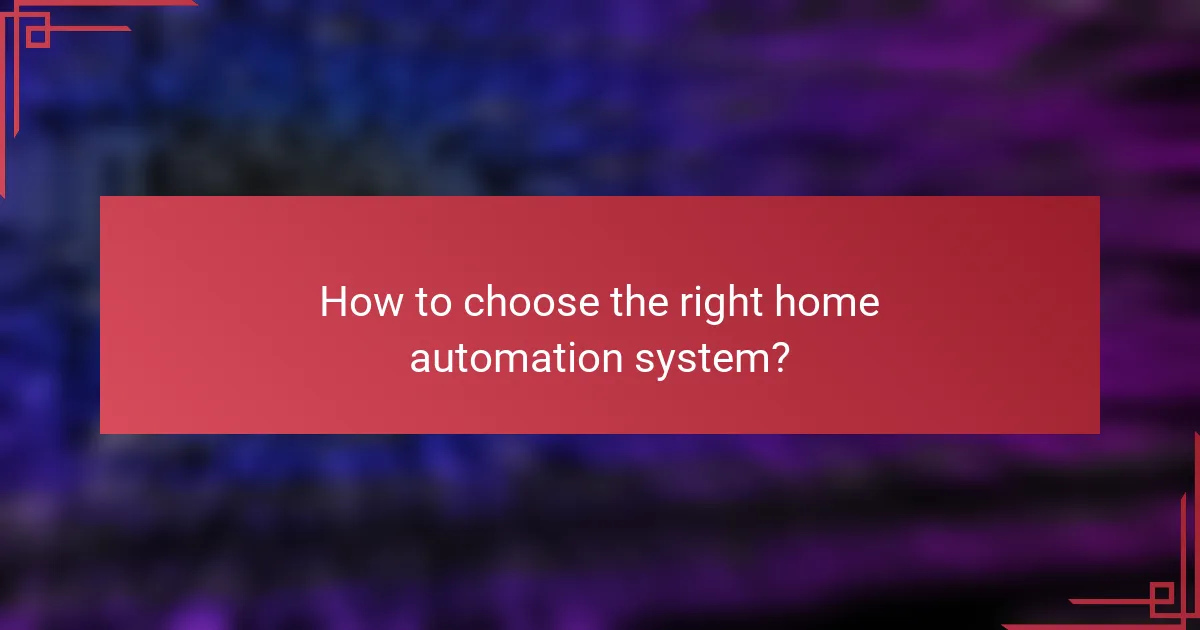
How to choose the right home automation system?
Choosing the right home automation system involves assessing your specific needs, ensuring device compatibility, and considering your budget. A well-selected system enhances security, monitoring, and control of your home environment.
Assessing security needs
Start by identifying the security features that are most important for your home. Consider aspects like surveillance cameras, motion sensors, and smart locks. Evaluate your property layout to determine where these devices should be placed for optimal coverage.
Think about the level of monitoring you desire. Some systems offer 24/7 professional monitoring, while others allow for self-monitoring through mobile apps. Choose a solution that aligns with your comfort level and security requirements.
Evaluating device compatibility
Ensure that the home automation system you choose is compatible with your existing devices. Check if it can integrate with smart lights, thermostats, and appliances. Compatibility with popular platforms like Amazon Alexa or Google Assistant can enhance functionality.
Review the manufacturer’s specifications and user reviews to confirm that devices work seamlessly together. This will prevent future frustrations and ensure a cohesive smart home experience.
Considering budget and installation
Your budget will significantly influence your choice of home automation system. Systems can range from a few hundred to several thousand dollars, depending on features and complexity. Factor in both the initial purchase cost and ongoing subscription fees for services like monitoring.
Installation can also impact your budget. Some systems are DIY-friendly, while others may require professional installation. Assess your technical skills and decide if you prefer a straightforward setup or if you need expert assistance to ensure everything functions correctly.

What are the emerging trends in home automation?
Emerging trends in home automation focus on enhancing security, monitoring capabilities, and user control through advanced technologies. Key developments include AI-driven solutions and a growing emphasis on privacy protection.
AI-driven security solutions
AI-driven security solutions leverage machine learning algorithms to analyze data from various sensors and cameras, improving threat detection and response times. These systems can differentiate between normal and suspicious activities, reducing false alarms and enhancing overall safety.
For instance, smart cameras can recognize familiar faces and alert homeowners to unknown individuals. Additionally, AI can integrate with other smart devices, allowing for automated responses such as locking doors or activating alarms when a potential threat is detected.
Increased focus on privacy
The increasing adoption of home automation has led to heightened concerns about privacy and data security. Homeowners are becoming more aware of how their data is collected, stored, and used by smart devices, prompting manufacturers to adopt stricter privacy measures.
To address these concerns, many companies are implementing end-to-end encryption and offering users more control over their data. Homeowners should look for devices that comply with privacy regulations and provide transparent data usage policies to ensure their information remains secure.
